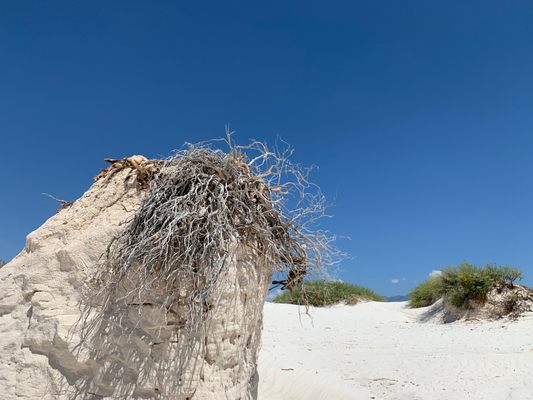About
Nestled in the Cuatrociénegas Reserve, desert winds slowly form these majestic, white dunes, known as Dunas de Yeso. The dunes are the second largest gypsum dunes in North America. The sand that forms the dunes dates back to the Cretaceous Era, when this area was once at the bottom of a seabed.
The six rocky mountain ranges that surround the desert valley are full of gypsum. When it rains, rainwater carries gypsum deposits from the surface of the mountains to the aquifers (underground porous rock) that, through springs, feed the area’s pools. When these shallow pools evaporate, the gypsum is exposed. These gypsum deposits then slowly erode into fine sand crystals that are swept up by the wind to form the dunes. You can see similar expanses of gypsum at White Sands National Park in New Mexico.
The winds here constantly change the desert landscape. Walking through these dunes is like a journey back in time to when this desert was a seabed teeming with life from the Cretaceous. The sand’s pure gypsum content makes the sand very white, which shines in the sunlight making for glorious sunsets.
Related Tags
Know Before You Go
The site is reachable by car at the indicated address, and there is ample car parking space (as shown in the picture). From there, report to the Poza Azul Visitors Center where you can buy refreshments and purchase tickets.
It's a good idea to consult a guide from the tourist office, who will take you to the dunes and explain how they’re formed. Admission is affordable and you'll need about an hour there. Visitors can also take their shoes off in the dunes if they'd like to. The opening hours are Monday through Sunday, 10 a.m. to 6 p.m.
Yucatan: Astronomy, Pyramids & Mayan Legends
Mayan legends, ancient craters, lost cities, and stunning constellations.
Book NowCommunity Contributors
Added By
Published
March 8, 2023










































